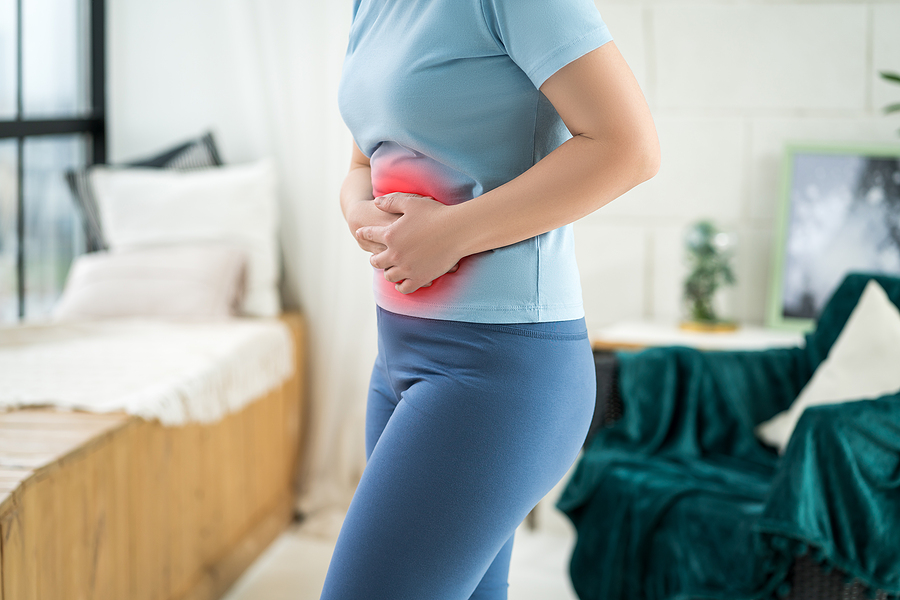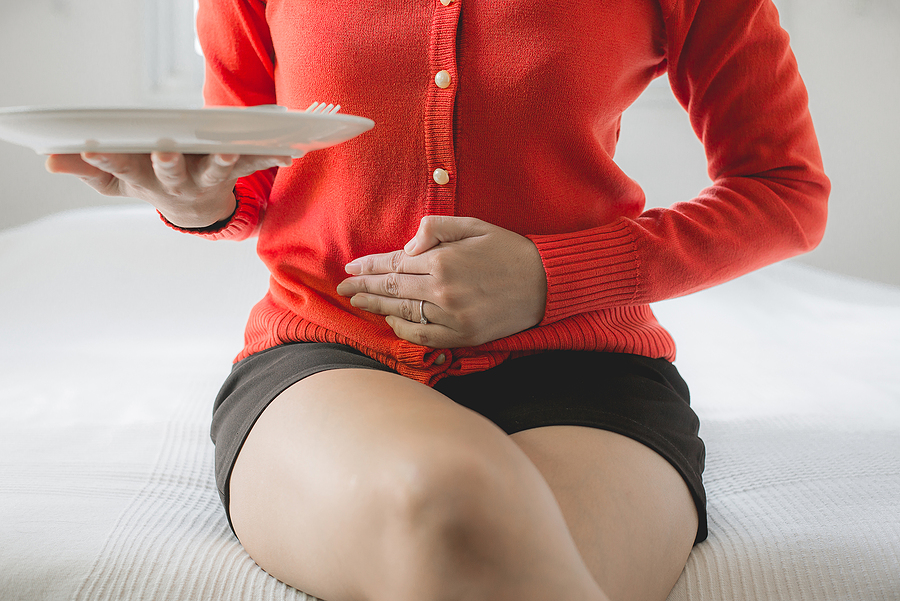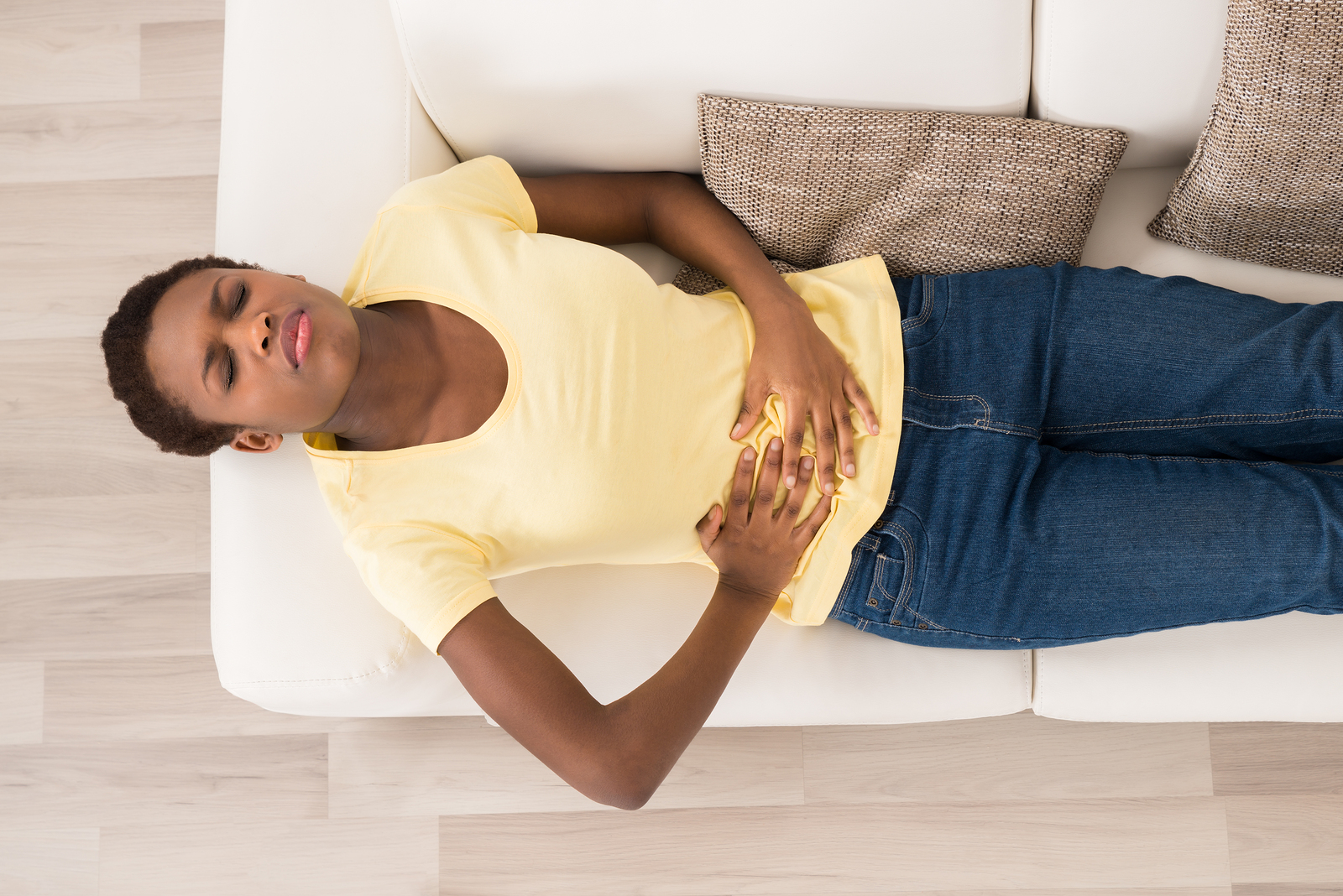Premenstrual syndrome isn’t something I just talk about — I’ve experienced it first hand, and I know how awful it can be! I remember being 20 years old, exhausted, overwhelmed and confused. I had an amazing adventure ahead of me – a trip to Europe – but I couldn’t even find the energy to renew my passport. I wondered where the excitement I had felt just a few days before had gone – and why I was now simply feeling numb. I wish I’d known then what I know now — that PMS is real, intense, and treatable! There’s no reason for anyone to feel the way I did and think there’s nothing they can do about it.
So why aren’t people talking about this more? Why do so many women still come into my practice talking about these monthly symptoms like they’re something uncontrollable? A big part of it is our culture — for years, women have been told that PMS is a normal part of being a woman, and all they can do is grin and bear it – or, if it’s too severe, take to their beds until it passes.
A little knowledge goes a long way. I had no idea that I could make a few simple changes to alter the way I was feeling each month. I had no idea that I could escape the monthly bloating, cramps, nausea, low energy, mood swings and insatiable appetite I experienced. I’m so grateful that my education and practice have taught me differently, and I’m eager to share that knowledge with other women so they can take control and avoid the monthly misery I used to feel.
What is Premenstrual Syndrome?
Most women know when their period is coming by the subtle signs their body sends. Perhaps their breasts are tender, or they crave chocolate, or they find themselves a little more on edge than usual. Nearly 90% of women report having some symptoms at some point. But even when they notice these signs, women can usually function just as they would any other time of the month. But for some, it’s not so simple.
When symptoms that surface prior to menstruation prevent you from carrying out your daily tasks, you may be suffering from premenstrual syndrome (PMS). True PMS is more than just a mild symptom or two. It’s a group of behavioral, emotional and/or physical changes that can be present for a week or two before your period and usually goes away once you begin menstruating. If you have severe symptoms that last at least five days before your period for three or more months in a row, you could be among the 20-30% of women dealing with moderate to severe PMS.
What Symptoms Should I Be Looking For?
Every woman is a unique individual who will experience symptoms in her own way. She might have physical changes like bloating, cramps, tenderness in breasts, muscle aches and headaches, joint pain and swelling, acne, and bowel changes. She may notice emotional changes like feelings of depression and anxiety, frequent crying, difficulty sleeping, feeling out of control or overwhelmed, and being prone to angry outbursts. And she might face changes in behavior, such as a lack of energy, difficulty focusing, and forgetting things.
That’s a long list of symptoms, and if you had them all at once, you certainly wouldn’t be able to function. Most women who suffer from PMS don’t have all of these symptoms, but even having a few of them can be disruptive to daily life – especially if pain is severe or emotional outbursts are impacting your relationships.
Related Article: 9 Natural Ways to Ease Anxiety
Why Do Some Women Have Such Severe PMS?
There’s no clear answer on what causes PMS, or why some women experience it so much more severely than others. It’s likely that hormonal imbalance is the big culprit. If your hormones aren’t usually properly balanced, the natural monthly shifts can cause big problems.
Estrogen and progesterone have predictable patterns of rising and falling levels throughout a menstrual cycle. In the beginning of the cycle, the day your period starts, levels of both are low. About a week in, estrogen levels rise, peaking just before ovulation (day 13 or 14), drop again, rising once more between days 21 and 24, then taking a final dip to begin the cycle again. Progesterone levels typically rise between days 14 and 27. While this cycle happens in all women, some may be particularly sensitive to these changes, and thus experience intense symptoms.
Other theories on what causes PMS include nutrient deficiencies, excess stress, excess estrogen, yeast overgrowth, excess prolactin, inflammation and hypothyroidism.
And then there are factors that, while they don’t cause PMS, can increase uncomfortable symptoms. These include depression, smoking, excess stress, lack of exercise, insufficient sleep, and consuming too much alcohol, sugar, salt or red meat. Prior health issues may also flare up prior to menstruation, such as asthma, allergies, and migraines.
With all those things at play, it’s no wonder PMS can seem inevitable and unavoidable! But I want you to know that there is hope. I learned how to keep my PMS symptoms at bay, and so can you!
7 Tips to Tame the PMS Beast
PMS can feel like a wild beast ravaging your body, but you don’t have to simply surrender. With these seven tips, you can begin to regain control over how you feel and keep that beast at bay.
1. Choose Healthy Food
This really is the number one tip for feeling better. Eating whole foods, organic when possible, and avoiding processed foods can make a huge difference. But you can’t just eat right when you have symptoms and expect to feel better because it takes your body some time to get rid of all the junk you put into it. You’ll need a healthier way of eating to become your new norm. I often tell people to follow the 80/20 rule — if you eat well 80% of the time, you can allow yourself to veer off course once in a while and still feel good.
If you’ve been eating poorly for a long time, don’t try to change your entire diet all at once. Try a few simple changes first: drink water instead of sugary drinks, eat protein at every meal, reduce carbohydrates and avoid processed foods and added sugar. Healthy meals and snacks eaten at regular intervals will help you avoid the symptoms caused by extreme high or low blood sugar levels.
2. Exercise
Just like eating right, I advise women to get active all the time. That’s because it works! Exercise releases endorphins, and helps relieve pain and stress. Working out boosts your metabolism, curbing cravings and helping you maintain a healthy weight. Exercise also increases circulation, which helps relieve premenstrual symptoms. And you don’t have to spend hours working out. Regular movement is what matters, so try to make it part of your daily routine. If you don’t have time for an exercise class, or that simply doesn’t appeal to you, try walking on your lunch break, or even consistently taking the stairs instead of the elevator. If you can find exercise you love then fitting it in will be a priority, not just be one more thing on your to do list. And, you’re much more likely to keep at it. So think of activities you enjoy, and then go for it!
3. Nutrient Supplements
Why is supplementation necessary if you’re eating right? Because with the way food is produced today, even when you make healthy choices it’s tough to get all the nutrients you need. Every woman has unique nutritional requirements, and a pharmaceutical grade supplement can provide the specific vitamins and minerals your body needs. Examining those needs for yourself can help you determine which which supplements you should add. At the very least, I encourage women to add a high-quality multivitamin to their daily routine. Vitamin B6, calcium and magnesium, which works in conjunction with calcium, are particularly helpful in relieving symptoms caused by PMS.
4. Seek Herbal Support
Herbal medicine can provide natural relief for a number of ailments, and there are some specific herbs that have been shown to reduce and prevent symptoms of PMS. Several studies have found that chasteberry has a positive impact on symptoms including irritability, anger, headache and breast fullness. Ginkgo Biloba has also been found to reduce breast tenderness and decrease irritability and anger. Other herbs that may help are black cohosh and St. John’s Wort.
5. Check Your Stress
Chronic stress means continually high levels of cortisol are being produced, which can have a huge impact on hormones – especially if they’re already imbalanced to begin with. So many of the symptoms women experience with PMS are also symptoms of being overstressed, so it makes sense that alleviating stress could help relieve them. Making the time to stop and focus on reducing stress helps keep your hormones balanced and cortisol levels even. Daily meditation, yoga or tai chi can all be great ways to ground yourself. But for some people, trying to engage in these practices can actually cause more stress — so you have to find something you truly enjoy, and make that your daily stress relief. Alcohol and caffeine can cause cortisol spikes as well, so it’s best to avoid overindulging. Getting plenty of sleep will also help keep cortisol levels balanced.
Related article: Sleep and Hormones: The Cyclical Relationship Between Sleep and Hormones
6. Avoid Exposure to Environmental Toxins
Many women have no idea how often they come into contact with things that disrupt their hormones. Since hormonal imbalance is often behind those uncomfortable symptoms, this is important information to have. There are toxins everywhere: on conventionally grown fruits and vegetables, in your food storage products, laundry detergent, household cleaners, cosmetics, and even in your clothing. If you know what you might be exposed to, you can seek out healthier alternatives that won’t send your hormones into overdrive.
7. Consider Bioidentical Hormones
When women are experiencing symptoms linked to hormonal imbalance, conventional practitioners too often jump to hormone replacement therapy or an antidepressant as a solution. While I urge women to try other solutions first, if you aren’t finding relief, this could be the right answer for you. But if you decide to try hormone replacement therapy, I highly recommend using bioidentical progesterone rather than the synthetic variety that might cause more harm than good.
When Lifestyle Changes Aren’t Enough
You know your body best, and only you can determine how much your PMS symptoms are disrupting your life. A small percentage of women of childbearing age, up to 5%, experience a more severe form of PMS called premenstrual dysphoric disorder. If your symptoms are consistently preventing you from living life to its fullest, and lifestyle changes don’t make a difference, see a health care provider who can help you evaluate and find the right solution for your individual circumstances.
You Don’t Have to Give in to the Beast
There’s no need to resign yourself to feeling miserable for a week or more each month. There are so many ways that women can take control of their health. It will take some time, but there’s no time like now to begin! Start working on lifestyle changes today that can keep you feeling great no matter what time of month it is!
References:
https://www.webmd.com/women/guide/what-is-pms#2
https://www.mayoclinic.org/diseases-conditions/premenstrual-syndrome/symptoms-causes/syc-20376780








